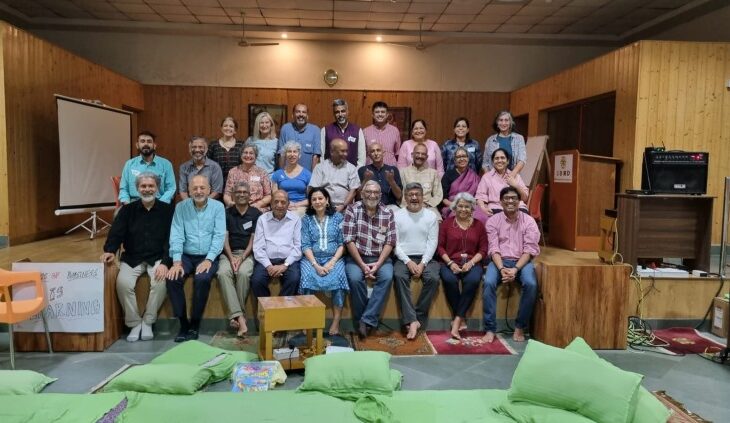From Sanatana to Nitya Nutana: Making Ancient Indian Wisdom Relevant for a Global Audience | Prasad Kaipa
IIW Web Team 26 September, 2023
Revisiting the Ancient Gurukula System
In antiquity, the Indian subcontinent had an unparalleled way of preserving and transferring knowledge, both practical and spiritual. Oral tradition served as the primary means of disseminating complex frameworks such as the Vedas, Upanishads, and Sutras. These age-old texts were often condensed into aphorisms, pithy statements that serve as the backbone of a subject.
Aphorisms function as invisible strings, connecting disparate beads of thought into a coherent whole, much like a necklace. Gurus or teachers would pick an aphorism to elaborate upon, letting students engage in a collaborative process of inquiry, dialogue, and reflection. This unique pedagogical approach respected the individuality of each student, allowing them to engage with the material in a deeply personal way.
The Erosion of Personalized Learning
However, with the advent of institutionalized education systems and the pursuit of objectivity, this nuanced approach to learning has been diluted. Traditional wisdom and its interpretation have become concretized, often shutting down the opportunity for dialogue and individual contextualization. This standardization has led to the erosion of the original intent, and the wisdom is no longer universally applicable but often misinterpreted or misapplied.
A Five-Step Approach to Reviving Ancient Wisdom
To revive this wisdom and make it globally relevant—transitioning from Sanatana to Nitya Nutana—we propose a five-step iterative approach:
- Choosing the Source Wisely: Not all ancient frameworks are equally relevant today. Choose the aphorism, principle, or sloka that speaks to current challenges.
- Contextualization and Contemporization: The selected wisdom should be examined in today’s context, stripping away anachronistic religious or spiritual connotations where necessary.
- Interpretation and Comparison: The ancient wisdom should be interpreted and then contrasted with contemporary knowledge systems.
- Validation Through Experience: The effectiveness of the approach should be validated experientially rather than just theoretically.
- Application in Controlled Circumstances: Finally, the wisdom should be applied under controlled circumstances to ascertain its efficacy.
Reflection and Conclusion
For those steeped in traditional wisdom seeking clarification, monks and swamis can serve as invaluable guides. They offer deep insights that can assist in the contemporization and contextualization of ancient wisdom.
In essence, making ancient Indian wisdom relevant for today’s world requires an intentional effort to move from Sanatana to Nitya Nutana. It demands a return to the roots of Indian pedagogy while adapting its rich insights to contemporary challenges.
Acknowledgment: I just came out of a great open space meeting in Dharmashala and several friends in the meeting like Anil Sachdev, Anjali Raina, Ishan Raina Anil Grovor, Dr. Ritu Anand, Peggy Holman and kewal nohria were asking questions about how to take Sanatana Dharma into Nitya Nutana and hence this blog! Thank you folks! Navi Radjou நவி ராஜூ Sai Sambat Hari Vadlamani
An Example
My colleague at Institute of Indic Wisdom Raghu Ananthanarayanan provided this sutra and information below to share how yoga teachers look at translating Yoga Sutras to teach their students.
My colleague Raghu shared this sloka that other yoga teachers use in learning and understanding Sutras.
अल्पाक्षरमसन्दिग्धं सारवद्विश्वतोमुखम्।
अस्तोभमनवद्यं च सूत्रं सूत्रविदो विदुः॥
अल्पाक्षरम् – concise, असन्दिग्धम् – clear, unambiguous, सारवद् – meaningful, विश्वतोमुखम् – universal, अस्तोभम् – not halting, smooth flow, अनवद्यम् – without any mistakes.
· Also- it must be hetumat= each sutra tells a story;
· The Sutra is written by a sage- one who speaks only on the subject he is collating and making the definitive statement about the subject
· The Rishi, a curious and serious learner of wisdom, puts together all that is known about the subject so far.
· The beads are woven onto the string to make a garland.
· These beads are the contemporary interpretations of the sutra and the most knowledgeable person of that time writes the commentary.
· The guru who teaches the sutras also interprets the commentaries for the student and contextualises it for him
· The student learns through shravaNam, mananam, nidhidhyAsanam; listening and absorbing- pondering over and experimenting; embodying and living by the learning.

